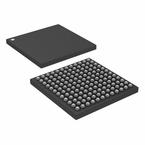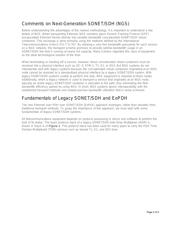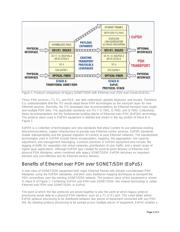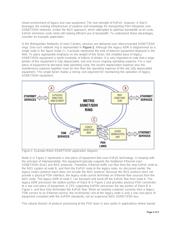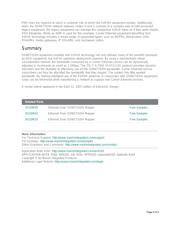下载

Maxim > Design Support > Technical Documents > Application Notes > T/E Carrier and Packetized > APP 4102
Keywords: Ethernet, SONET, SDH, EoPDH, EoPoS, Ethernet over SONET, EoS, Ethernet over PDH
over SONET, Mapper, Carrier Ethernet, MEF, Metro Ethernet
APPLICATION NOTE 4102
Using Ethernet over PDH in SONET/SDH
Networks
By: Arthur Harvey, Business Manager, Ethernet Products
Sep 11, 2007
Abstract: This article discusses Ethernet over PDH over SONET/SDH (EoPoS), EoPDH, and Ethernet
over SONET/SDH. The emergence in the 1990s and the history of Next-Generation SONET/SDH (NGS)
equipment are described. The article explains that NGS could not provide ubiquitous interoperability with
legacy systems, and thus was not universally implemented. Finally, today's emerging technology,
Ethernet over PDH over SONET/SDH (EoPoS), is presented. EoPoS marries legacy systems with
efficient transport technologies by using the International Telecommunications Union (ITU) standard
Ethernet over PDH (EoPDH) in conjunction with SONET/SDH.
Introduction
Carrier Ethernet unlocks many potential revenue-generating services that telecommunications service
providers, known as Carriers, must deploy to maintain their competitive position. However, most Carriers
are not ready to convert to a pure Ethernet network because Ethernet lacks native support for link
monitoring, fault isolation, and diagnostic testing. These three attributes, which enhance service quality,
are native to the Plesiochronous Digital Hierarchy (PDH) and synchronous SONET/SDH networks.
Consequently over decades, Carriers came to trust PDH and SONET/SDH networks as dependable
platforms for delivering critical services to demanding customers.
The transparent and efficient transport of native Ethernet frames from network edge to network edge is
challenging. In the past, overcoming these challenges was costly. Near the end of the 1990s, many
Carriers forklifted some portion of their networks and replaced them with what was then called "Next-
Generation" SONET/SDH (NGS) equipment. That next-generation equipment efficiently transported
Ethernet and TDM services when the infrastructure approached 100% utilization. But NGS equipment
had its own weakness: it did not interface with legacy systems. Each node that terminated or handed off
a service needed to be replaced with a new system. While this replacement and update burden
stimulated business for equipment makers, replacing legacy nodes was an inefficient use of Carriers'
capital.
Today, however, new protocols allow the re-use of legacy equipment. The importance of these new
protocols is significant, as they minimize the overall cost of delivering new Carrier Ethernet services.
Page 1 of 5

